APUEA
THE









HOW NETWORK MANAGEMENT SYSTEMS SUPPORT RENEWABLE URBAN ENERGY by Hydraulic Analysis Group
KEY STEPS FOR LARGE COMMERCIAL AND INDUSTRIAL ORGANIZATIONS TO PUT DECARBONIZATION PLANS INTO ACTION by Black & Veatch
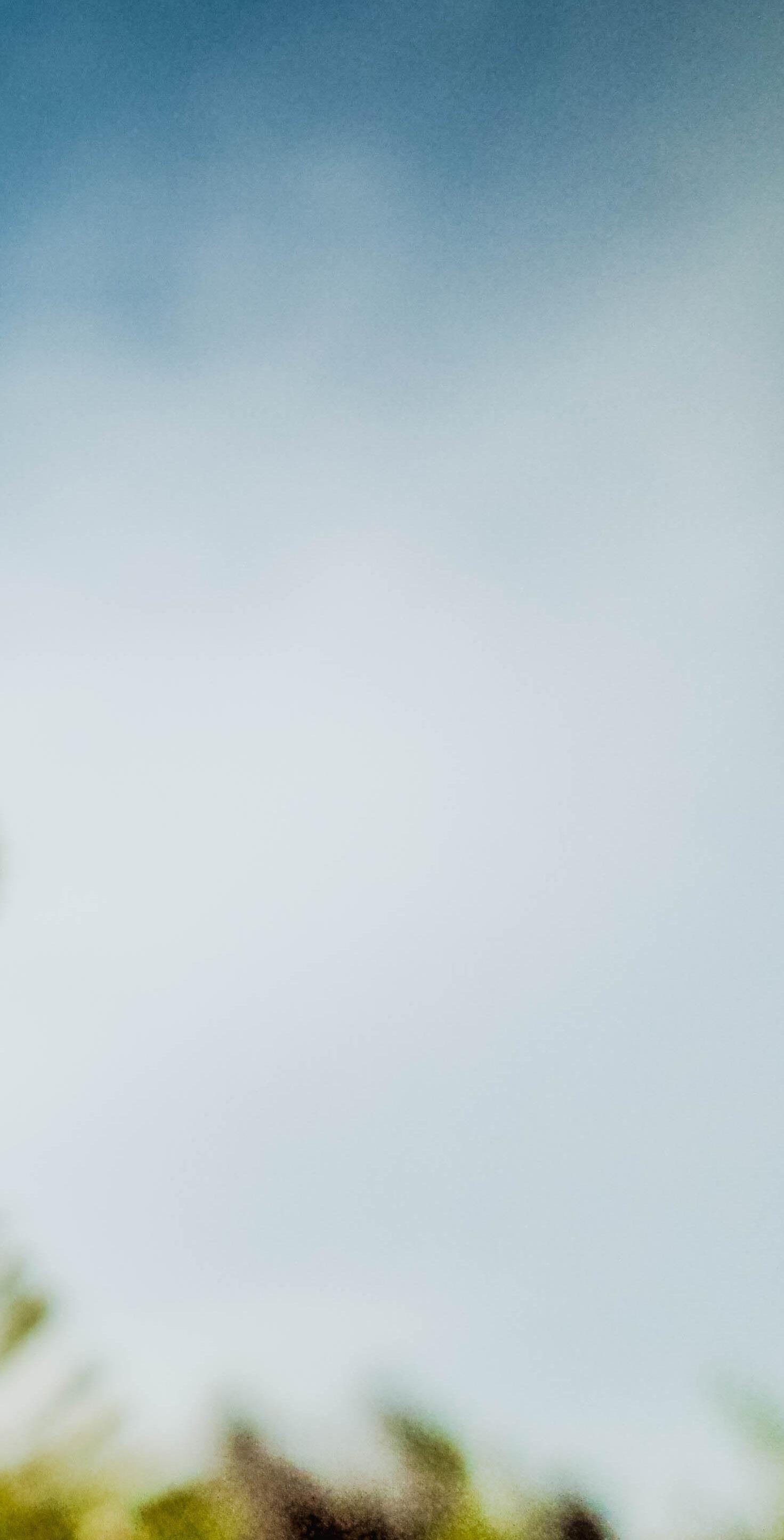

ENERGY AS A SERVICE by BECIS
OPTIMAL CONDITIONS ARE NOT ALWAYS THE ONLY ROUTE by Qatar Cool
26
28
10 14 18 22 32 38 39
INTERVIEW WITH LARS ÄRLSJÖ, MANAGING DIRECTOR, NXITY SWEDEN by APUEA
RECENT APUEA ACTIVITIES
OPTIMIZING DISTRICT ENERGY NETWORKS WITH DIGITAL TWINS by Gradyent 36
EVENT CALENDAR
MEMBER DIRECTORY APUEA MEMBERSHIP FORM

THE nearly eight thousand pages IPCC AR6-report underlines and reconfirms the serious consequences and risks of climate change. Even though technologies, to a great extent, are already available to mitigate climate change, more financing and policy instruments are needed. While the IPPC AR6-report is unpleasant reading, renewable power grew by almost 10% in 2023, covering 83% of all new power capacity. Solar and wind account for 90% of the renewable power growth.
It’s great to see Southeast Asia’s annual growth returning to pre-pandemic rates of around 5% and with inflation reduction for the coming years at the same time. China is expected to reach an annual growth of 5% in 2023 from 3% in 2022. India is expected to reach an annual growth well above 6%. The Asia Pacific region, as a whole, is expected to grow by just below 5%. Overall, there are good signs of economic recovery across the region as the pandemic ends.

While we see an increasing awareness of District Energy schemes, it doesn’t get the attention it deserves. We have to work harder and show that integrated District Energy schemes provide a wide range of benefits for systemic efficiency and sustainable energy. Besides clean, efficient, and resilient heating and cooling supply, District Energy plays an important role in energy recovery at scale, distributed generation, and renewable energy integration and provides excellent flexibility features for electricity grids. It’s great to see the efforts from both United Nations Environment Programme (UN Environment) and United Nations Development Programme (UNDP) promoting District Energy schemes. Asian Development Bank (ADB) and the World Bank (WB) already have several successful District Energy projects in the region, and we see both Asian Infrastructure Investment Bank (AIIB) and International Finance Corporation (IFC) supporting the development across the region.
Unfortunately, many of the green building standards are working against District Energy solutions, preventing the extent of the benefits mentioned above. As many green building standards favour local solutions, there are fewer incentives for developers to take a holistic approach and develop District Energy schemes. We see this across the region and globally, and we hope the international District Energy community can come together to influence the green building standards to incentivize sustainable integrated urban energy schemes. APUEA will keep increasing the efforts promoting District Energy and, together with our members and partners, accelerate the development of District Energy and showcase successful projects.
The first quarter of 2023 has been full of activities for APUEA, with events in India, the Philippines, Thailand, and Vietnam. In the second quarter, we look forward to contributing to the Euroheat & Power Congress in Torino and Asian Development Bank’s Asia Clean Energy Forum in Manila, among many other events. More information on our recent and future events can be found in this issue of the APUEA Magazine.
The Global District Energy Climate Awards 2023 will take place during the Euroheat & Power Policy Conference in Brussels on 14-15 November 2023. Applications are open from 1 March until 25 May 2023 at www.districtenergyawards.org or www.euroheat.org. I strongly emphasize organizations that have developed an outstanding District Energy scheme to apply for the awards. For me, personally, it’s a great honour being invited as a member of the evaluation panel beside prominent leaders in the global District Energy community, so I’m looking forward to receiving great candidates!
In this issue of the APUEA Magazine, you can read articles on Network Management, how to put Decarbonization Plans into action, Energy as a Service, Brownfield District Cooling Projects, Digital Twins for District Energy Systems, and an interview with Managing Director Lars Ärlsjö at NXITY Sweden. We want to thank Hydraulic Analysis, Black & Veatch, BECIS, Qatar Cool, NXITY and Gradyent for contributing to this issue of the APUEA Magazine.

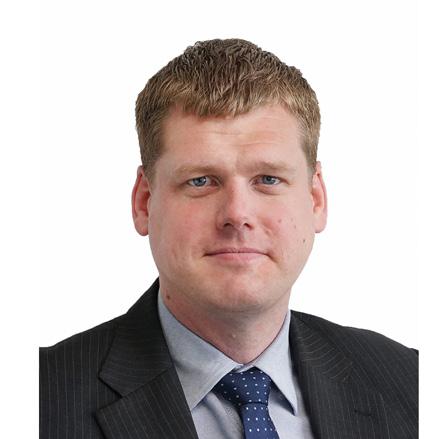
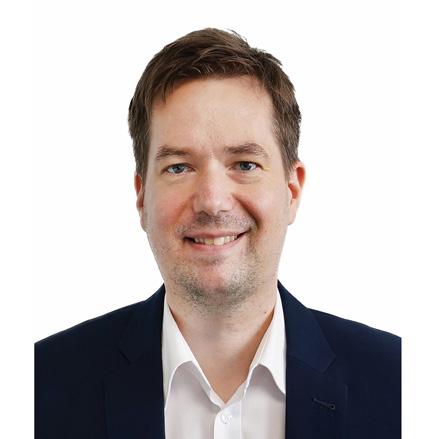



For more information about APUEA and how to become a member, contact info@apuea.org
www.apuea.org

The Asia Pacific Urban Energy Association (APUEA) was launched in 2017 to promote the development of sustainable Urban Energy Systems in the Asia Pacific region. The APUEA platform promotes public and private sector collaboration to develop sustainable urban energy systems that support livable cities across the Asia Pacific region. Our membership and activities serve as an information hub to support city policymakers, program managers, and other stakeholders in the design, development, and implementation of sustainable urban energy systems. Through our activities, including APUEA events, conferences, and continuous outreach to our members, we share international and regional best practices for planning and implementing sustainable urban energy systems—including policies and regulations, business models, and technologies for implementing district heating and cooling, smart grids, energy efficiency improvements, and renewable energy systems.
The APUEA membership provides a unique opportunity to liaise with governmental agencies and important stakeholders and get access to valuable information and intelligence on urban energy developments, business opportunities, trends, and financing in one of the fastest growing energy and infrastructure markets in the world. Membership benefits include a marketing platform, newsletters, APUEA Magazine, Annual Publications, Annual General Meeting including Trade Exhibition and Direct Assistance.
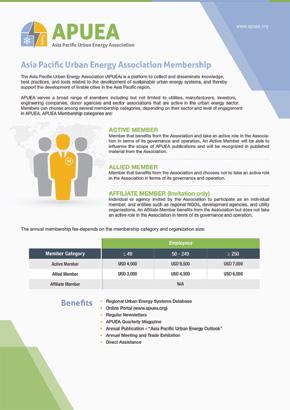

The Asia Pacific Urban Energy Association (APUEA) is a platform to collect and disseminate knowledge, best practices, and tools related to the development of sustainable urban energy systems, and thereby support the development of livable cities in the Asia Pacific region.
APUEA serves a broad range of members including but not limited to utilities, manufacturers, investors, engineering companies, donor agencies and sector associations that are active in the urban energy sector. Members can choose among several membership categories, depending on their sector and level of engagement in APUEA.
PREMIUM MEMBER
Premium membership includes an active role in the governance of the association through the APUEA Executive Committee and during the APUEA Annual General Meeting.
Premium membership also includes special recognition in APUEA publications and marketing channels, and free participation at APUEA events.
Advocacy and Representation
Matchmaking and Referrals
Direct Marketing
Market Intelligence
Knowledge and Best Practices
Regional and International Events
Direct Assistance
CORPORATE MEMBER
Corporate membership includes influence on the association’s activities during the APUEA Annual General Meeting, recognition in APUEA publications and marketing channels, and discounted participation at APUEA events.
AFFILIATE MEMBER (Invitation only)

Individual or agency invited by the Association to participate as an individual member; and entities such as regional NGOs, development agencies, and utility organisations. An Affiliate Member benefits from the Association but does not take an active role in the Association in terms of its governance and operation.


P ROF E S SIONA L TRAIN I N G
Is provided to Government agencies and Public institutions, including the following training module categories:

Introductor y training
Concepts and Technologies
Advanced training
VOC ATIONA L TRA I NI N G
Is provided in collaboration with educational institutions.

A REAL-TIME HYDRAULIC MODEL ALLOWS SYSTEM INEFFICIENCIES TO BE IDENTIFIED, OUTPUTS OPTIMISED, CONTROL SYSTEMS TUNED AND ANOMALIES (SUCH AS LEAKS AND HIGH RETURN TEMPERATURES) TO BE VISUALISED AND ADDRESSED.
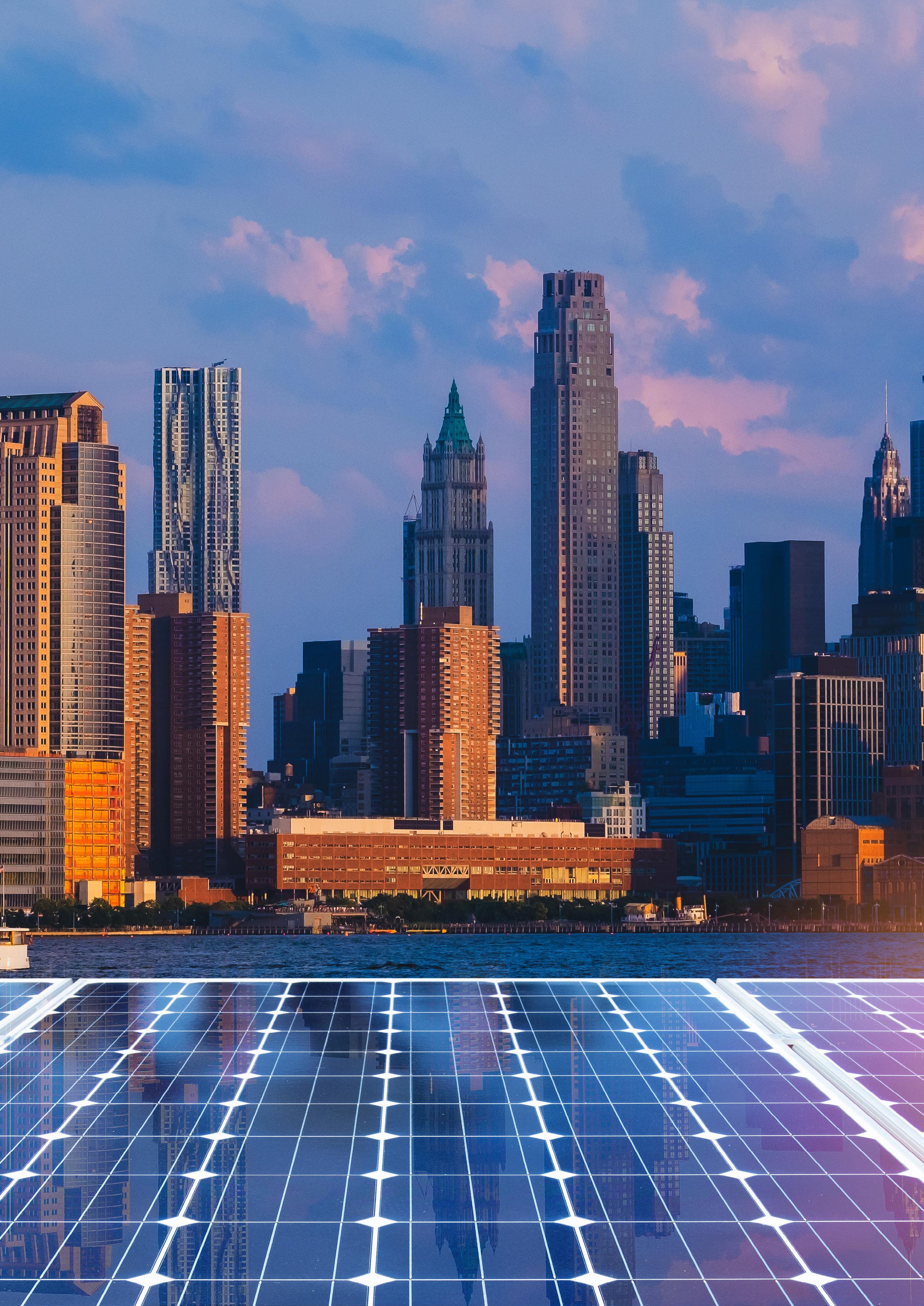



 By Glyn Addicott, Operations Director Hydraulic Analysis Group
By Glyn Addicott, Operations Director Hydraulic Analysis Group



































































Thegrowth of digitalisation in the urban energy sector is rapid with more and more sensors and monitoring systems coming online. Existing assets are also being upgraded with renewable energy sources which often results in multiple Energy Centres delivering into the network. This creates challenges to understand how the Energy Centres interact and support each other during high demand periods.
By far the most effective way of understanding how Energy Centre control systems need to be configured is to build a dynamic hydraulic and thermal model (digital twin) of the entire asset. This also provides a gateway to real-time pipeline management technologies that are widely used in the oil, gas and water industries. A real-time hydraulic model allows system inefficiencies to be identified, outputs optimised, control systems tuned and anomalies (such as leaks and high return temperatures) to be visualised and addressed. Software solutions to monitor pipeline systems and provide operational intelligence are becoming common place and now is the perfect time for the Urban Energy Industry to adopt the same proven solutions as other industries to take progressive steps forward.
THE ASIA PACIFIC REGION HAS NEVER BEEN AFRAID OF ADOPTING NEW TECHNOLOGIES AND LEADING THE WORLD IN DIGITISATION. THE NEXT FEW YEARS ARE GOING TO SEE HUGE CHANGES IN URBAN ENERGY WITH DISTRICT HEATING AND COOLING BECOMING KEY TO DECARBONISATION. IN ORDER TO ACHIEVE THESE GOALS, SOPHISTICATED PIPELINE MANAGEMENT SYSTEMS WILL NEED TO BE BUILT INTO CONTROL CENTRES TO SUPPORT OPERATORS WITH DAY TO DAY RUNNING OF NETWORKS.
Most current software systems that are branded as ‘digital twins’ simply take data from a pipeline asset (pressure, flow, temperature, power etc.) and try to use this data in isolation to understand the system operation and apply rulesets. Machine learning and even AI are advertised as being delivered as part of the digital twin. However, there are limitations in the benefits of this approach as the solution can only analyse and understand operating conditions that have already occurred as, for example, they will not know the impact of a pipeline leak on data until the leak occurs. In addition to this, as systems grow and new users are added, the solution has to learn again as the data is ever changing.
The most effective tool to monitor and evaluate the performance of a district heating or cooling system is a live hydraulic and thermal model of the system which can instantly compare measured values to expected values to allow anomalies to be identified. It will also allow libraries of anomalies, such as leaks, to be pre-simulated so the hydraulic engine effectively becomes the AI engine as it will know how an event will impact the pressure, flow and temperature sensors across the system, even if the event has never occurred before. Pattern recognition techniques can then be used to compare simulated values to measured values to allow the source of the problem to be automatically located.
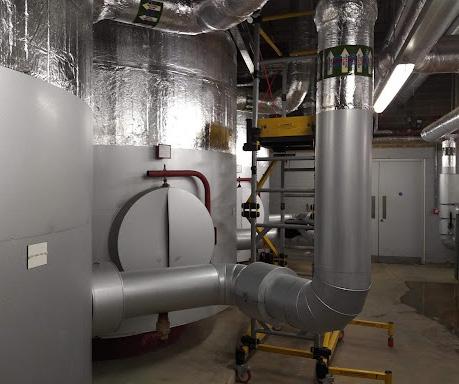
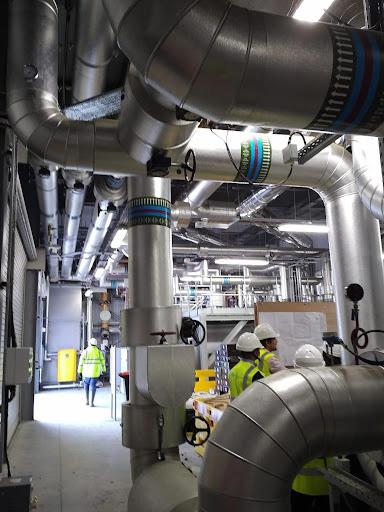
Whilst there is nothing new about using hydraulic models to simulate events,

problems start to arise when connecting hydraulic models to SCADA systems as nearly all hydraulic models currently available on the market cannot handle or process live data because they use a simple hydraulic engine designed for steady state data. They are often limited to analysing 15 minute data and require experienced hydraulic modellers to analyse and process the data. These systems are certainly not live and cannot simulate control systems or transient (upset) events. When system demands change or pumps stop / start these engines either need to average flowrates, which reduces accuracy, or abandon calculations.
Hydraulic models with a transient engine are different as they operate in a fully real-time environment, directly connected to SCADA systems. Digital twins are connected to oil, gas and water pipeline SCADA systems around the world, including many countries in Asia to provide the following functionality:
• Pipeline management and system optimisation / hydraulic balancing / control system tuning / anomaly detection / fault diagnostics










• What-if analysis



















































































• Network planning

The Asia pacific region has never been afraid of adopting new technologies and leading the world in digitisation. The next few years are going to see huge changes in Urban Energy with district heating and

cooling becoming key to decarbonisation. In order to achieve these goals, sophisticated pipeline management systems will need to be built into control centres to support operators with day to day running of networks.
For over 40 years, the Hydraulic Analysis Group have been supporting clients around the world with offline hydraulic modelling of district heating and cooling systems using our VariSim transient pipeline simulator. Recent projects include ESAP in Ottawa, Canada, which comprises a number of city wide district heating and cooling systems, designed to reduce carbon emissions from government buildings. VariSim can also operate seamlessly as a fully live hydraulic model from either OPC connections to SCADA or API connections to loggers. It offers a user-friendly cloud system with browser based access to your network with an immersive training simulator that integrates with your control systems acting as the real network. Operators can easily and instantly view the pressure, flow and temperature at any point in the system, even if there is no available measurement at this location. Pipeline management systems are very easy to monitor with the minimum of training and provide machine learning, demand forecasting and leak detection / location modules.

This technology can be applied to complex heating and cooling networks and also individual buildings. It is available for district heating and cooling, both on new and existing assets and will also allow a risk based approach to asset health to be produced using a hydraulic model. VariSim pipeline management systems are operational in China, Bangladesh, Indonesia, Qatar, UAE, Saudi Arabia, Uzbekistan and Europe.

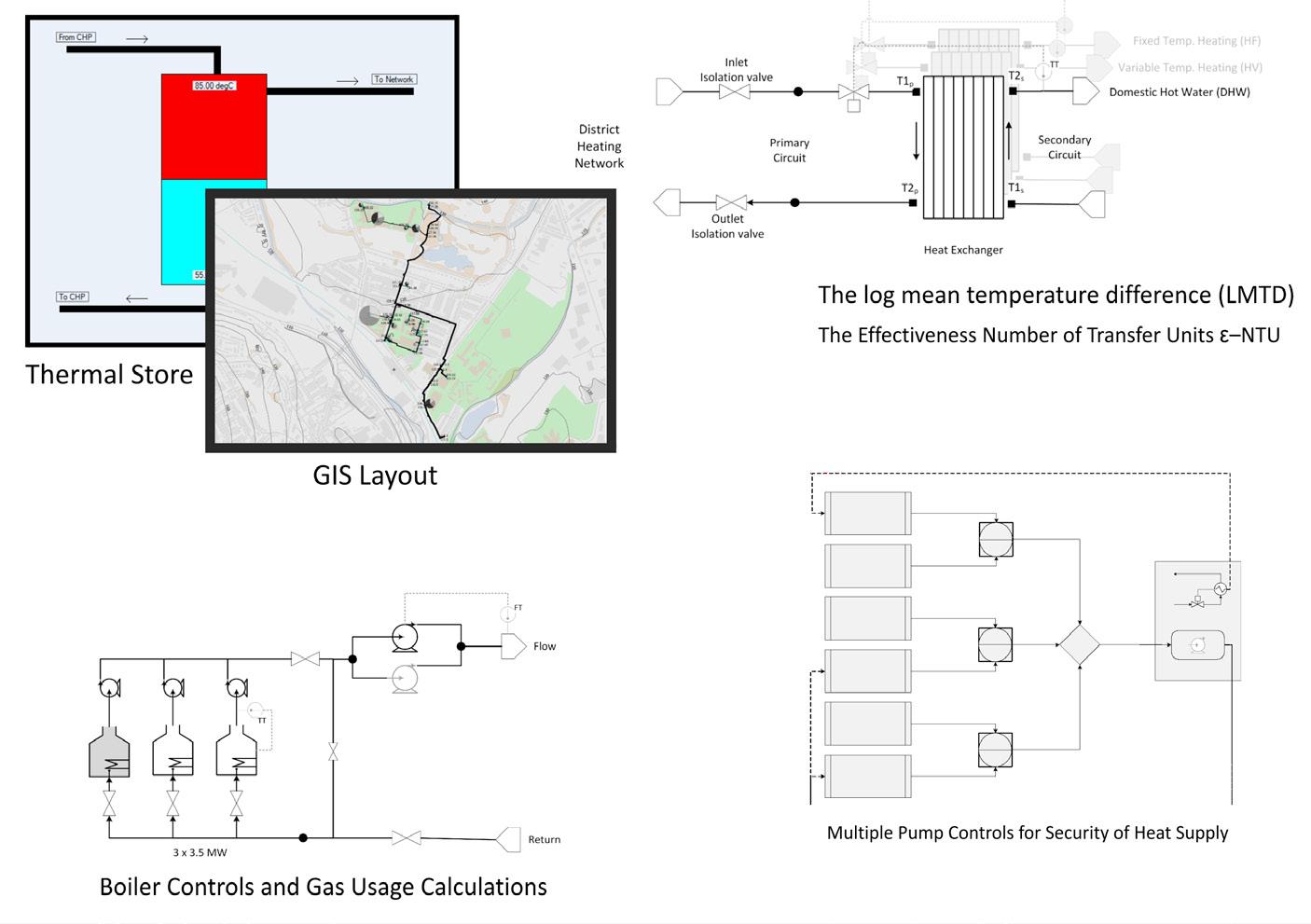
The Hydraulic Analysis Group supplies high performance software-based pipeline solutions and engineering design / consultancy services to the water, oil, gas, district heating and power industries. We supply offline and real-time business focused solutions for all aspects of a pipelines’ operation using our pipeline hydraulic simulator product (VariSim) that has been developed over 50 years.




Our unrivalled experience and knowledge is encapsulated in the product and has allowed us to be active and successful in delivering our solutions to major operating companies in Asia and particularly China. For more information, visit www.hydraulic-analysis.com.



























































WHILE INCREASING THE GENERATION OF RENEWABLE ENERGY WILL CONTRIBUTE TO THE REGION’S DECARBONIZATION TARGETS AND HELP TO MITIGATE ESCALATING ENERGY SECURITY RISKS RISING FROM THE ONGOING ENERGY CRISIS, ACCOMMODATING VARIABLE RENEWABLE ENERGY INTO ASIA’S GRIDS REQUIRES SYSTEMIC CHANGES TO TODAY’S POWER GRIDS.
By Harry Harji, Associate Vice President, Black & Veatch

THERE IS A MAJOR OPPORTUNITY FOR LARGE COMMERCIAL AND INDUSTRIAL ORGANIZATIONS TO TRANSLATE HIGH-LEVEL CONCEPTUAL DECARBONIZATION PLANS INTO REAL ACTION. WHAT IS NEEDED ARE DECARBONIZATION ROADMAPS THAT APPLY TECHNICAL AND COMMERCIAL RIGOR TO ACHIEVE REALISTIC, AFFORDABLE AND RIGHT-SIZED, AS WELL AS RIGHTLY TIMED, OUTCOMES.
Such planning and effective action are urgently needed across Asia, given that the International Energy Agency (IEA) foresees that China, India and Southeast Asia will account for more than 70 percent of the rise in global electricity demand over the next three years.
While increasing the generation of renewable energy will contribute to the region’s decarbonization targets and help to mitigate escalating energy security risks rising from the ongoing energy crisis, accommodating variable renewable energy into Asia’s grids requires systemic changes to today’s
 power grids.
power grids.
Our research shows that integration of renewable energy into grid systems –more than simply deploying renewable energy to replace the region’s heavy dependence on coal – is the top challenge facing Asia’s electric industry leaders.

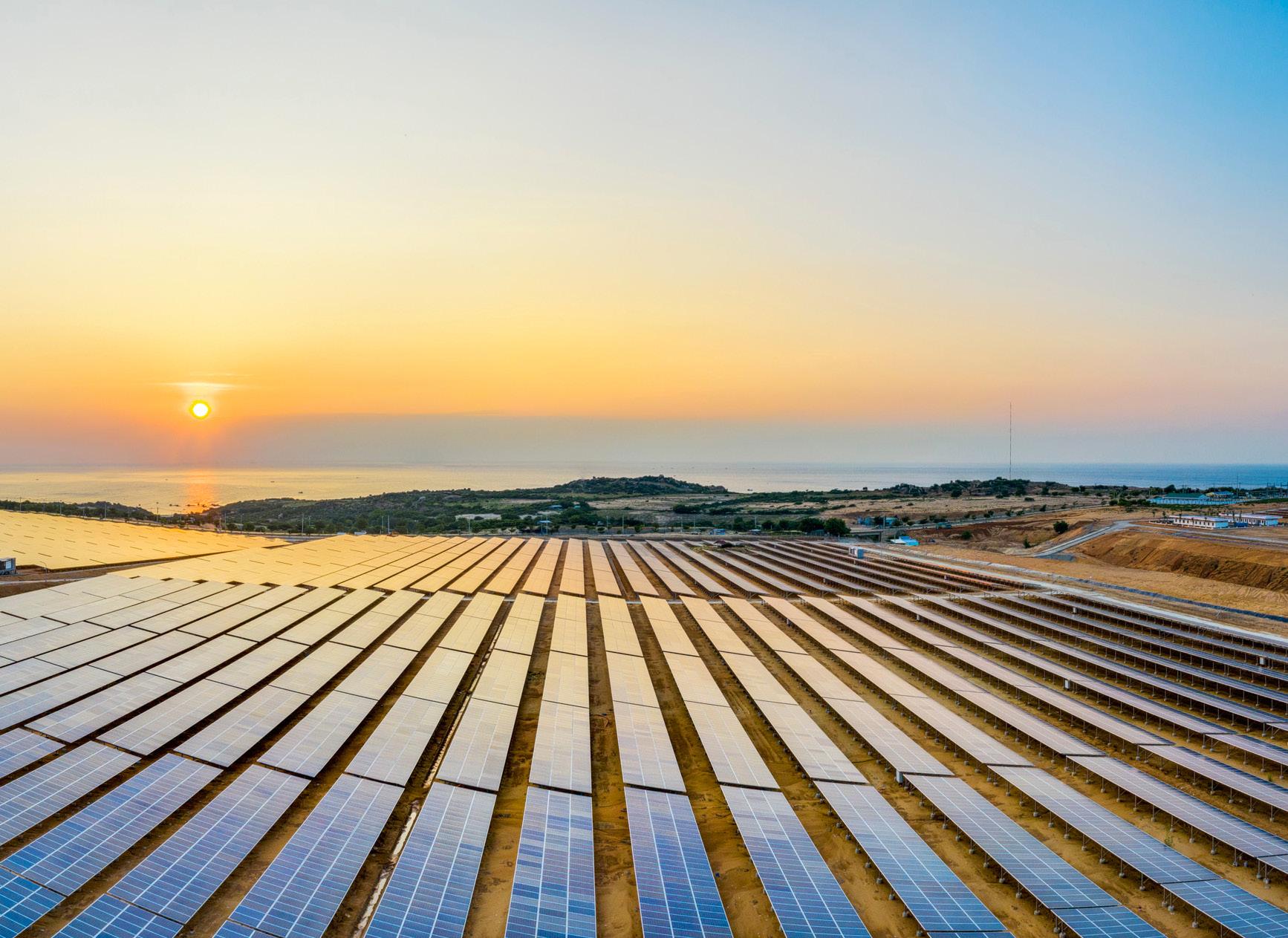
Deploying grid management solutions, including improved transmission technologies, such as dynamic line ratings, and energy storage systems— as well as hydrogen solutions long-term—are necessary to protect grid stability during periods of low renewable energy generation and high load.

Equally important in a green and just energy transition is the retirement or repurposing of Southeast Asia’s young coal power plant fleet to minimize the financial risks of stranded assets. (Figure 1).


Decarbonization road mapping will assist Southeast Asia and its businesses to thoroughly assess multiple decarbonization pathways.
Decarbonization roadmaps are essentially detailed yet flexible plans that electricity providers as well as large commercial and industrial companies will use to maximize returns on their asset investments and realize their sustainability goals.

Our survey findings show that one in three respondents do not have decarbonization roadmaps in place, highlighting a significant financial risk. Such technology and investment blueprints help electricity providers and large electricity users plan out capital investment over 10 years or longer horizons.

Only 15 percent of respondents claim to have such robust investment roadmaps in place, indicating there is much room to prioritize and optimize ongoing clean energy investments in the years ahead (Figure 2)
Figure 2
Strategic road mapping needs to encompass investments in energy efficiency, renewable energy and other new technologies. Effective strategic decarbonization roadmaps have to be multi-dimensional and address a host of other factors which will influence, and be influenced by, technology alternatives.
Fleet electrification is one decarbonization pathway. Black & Veatch is the technical expert supporting SCG International Corp. Co.’s effort to electrify its transportation fleets. The project seeks to be a blueprint for sweeping electric vehicle (EV) adoption and infrastructure throughout Thailand and other markets that SCG serves.
Key steps to consider when preparing decarbonization roadmaps include:
1Identify the possible, accept uncertainty

Getting started on a decarbonization roadmap can be complex. Decarbonization is a long-term undertaking — looking potentially up to 30 years into the future. To help manage this, the roadmap will need to identify low-hanging fruit, address the art of the possible and accept uncertainty. Adaptability has to be built into the plan, often with pre-set breakpoints to assess progress and reflect on changes and developments that will influence the roadmap’s future evolution. This approach avoids analysis paralysis in the face of demanding decarbonization targets.
2Technology at the core
Decarbonization programs at all levels require an understanding of how legacy, new and soon-toemerge technologies play together. A decarbonization strategic roadmap that lacks a detailed technology core will be insufficient.
Roadmaps must combine business goals with highquality, accurate market and regulatory analysis and requires first-hand expertise in decarbonization technology solutions in the power generation, power transmission, fuel and chemicals and transportation
sectors. The most complete analysis will come from partners with expertise in strategic planning and the myriad technology solutions, including hydrogen and renewable energy generation, as well as the complex interfaces between these technologies. Such ingredients, addressed in concert, will define successful decarbonization road mapping.
Roadmaps need to incorporate commercially ready and emerging technologies available over the next 30 years. This requires the technical competence and in-depth knowledge to identify technology timelines, cost curves, resiliency characteristics and prioritize technologies across multiple factors such as cost and returns, risk, availability and opportunity to scale.
Establishing which decarbonization technologies are best suited to delivering an organization’s decarbonization goals is inextricably interdependent on factors such as developing an understanding of organizational change and the relevant regulatory landscape. None of these elements in isolation will give rise to an effective strategic decarbonization roadmap. An authoritative strategy must be multidimensional and address a wide range of business, performance and capital expenditures (CAPEX) and operating expenses (OPEX)—considerations which will influence, and be influenced by, technology alternatives.
Accurate data gathering is required to develop the base case assumptions that will be reflected in the roadmap. Initial data gathering includes assessing the organization’s supply and/or demand-side energy production/consumption and CO2 equivalent emissions, with the nature of the assessment depending upon whether the organization is pursuing scope 1, 2 or 3 decarbonization goals. This needs to be mapped to an assessment of the organization’s existing and future consumption activities and generating resources, including owned generation or power purchase agreements. The assessment also has to incorporate the organization’s fuel price projections and CAPEX and OPEX estimates.
Black & Veatch is a 100-percent employee-owned engineering, procurement, consulting and construction company with a more than 100-year legacy of innovation in sustainable infrastructure. The company provides a full range of infrastructure lifecycle solutions, scaled and adapted for our clients in Asia.
Trusted for decades across the region, we are known for delivering safe, reliable and integrated generation, transmission and distribution solutions. Matched with agile delivery adapted to local markets, we bring the right experience at the right time from across our organization, resulting in higher quality outcomes, schedule certainty and cost control.
Our regional team, backed by global resources, helps clients stay ahead in times of change and embrace the energy transition, digitalization, and innovative technologies that create commercial success and a sustainable future.
The company’s global power business offers new and operating asset services, as well as full engineering, procurement and construction (EPC).
www.bv.com


BECIS COMBINES DISTRIBUTED ENERGY SOLUTIONS WITH IN-DEPTH EXPERTISE TO BRING OUR CUSTOMERS DECENTRALIZED UTILITIES AS A SERVICE. THIS REDUCES THE RISK AND COMPLEXITY FOR OUR CUSTOMERS WHILST ACHIEVING THEIR KEY OBJECTIVES OF SUSTAINABILITY, INCREASES COST EFFICIENCY, AND RESILIENCE OF THEIR ENERGY INFRASTRUCTURE, ALL WITH NO REQUIREMENT FOR CAPITAL INVESTMENT.


with the EaaS model, BECIS develops, constructs, operates, and owns distributed energy solutions, all with no requirement for capital investment.



Today’s consumers expect environmental and social responsibility and are basing purchasing decisions on those values. 34% of consumers said that they have chosen brands that have environmentally sustainable practices/ values*.
In addition, the current geopolitical situation mixed with other factors has made electricity and gas prices go up. This situation coupled with the urgent need to minimize the carbon footprint, is pushing consumers to imagine innovative ways to generate energy in a more efficient and sustainable way.
Solar is part of the answer, but not the only one. As a result, at BECIS we are focusing on EaaS solutions, where companies can access a range of energy services from third-party providers like us, thereby reducing their energy costs and improving their overall operational efficiency.
Energy as a Service (EaaS) is a relatively new concept that is gaining traction rapidly. This is because EaaS provides businesses with an alternative to traditional methods of energy procurement, and it is being viewed as a way to improve the overall efficiency of energy usage.
BECIS combines distributed energy solutions with in-depth expertise to bring our customers decentralized utilities as a service. This reduces the risk and complexity for our customers whilst achieving their key objectives of sustainability, increases cost efficiency, and resilience of their energy infrastructure, all with no requirement for capital investment.

Implementation of custom-designed onsite solar solutions can help to improve operational cost efficiency while achieving the sustainability objectives of businesses.
Bioenergy solutions with sustainably procured biomass heat, combined heat and power, and/or cooling, displace the use of less sustainable fuels such as diesel and natural gas.
Well-designed waste heat recovery system configured with heat pumps will enable to reuse the waste heat to produce hot water; an efficient heat source to further realize energy savings.
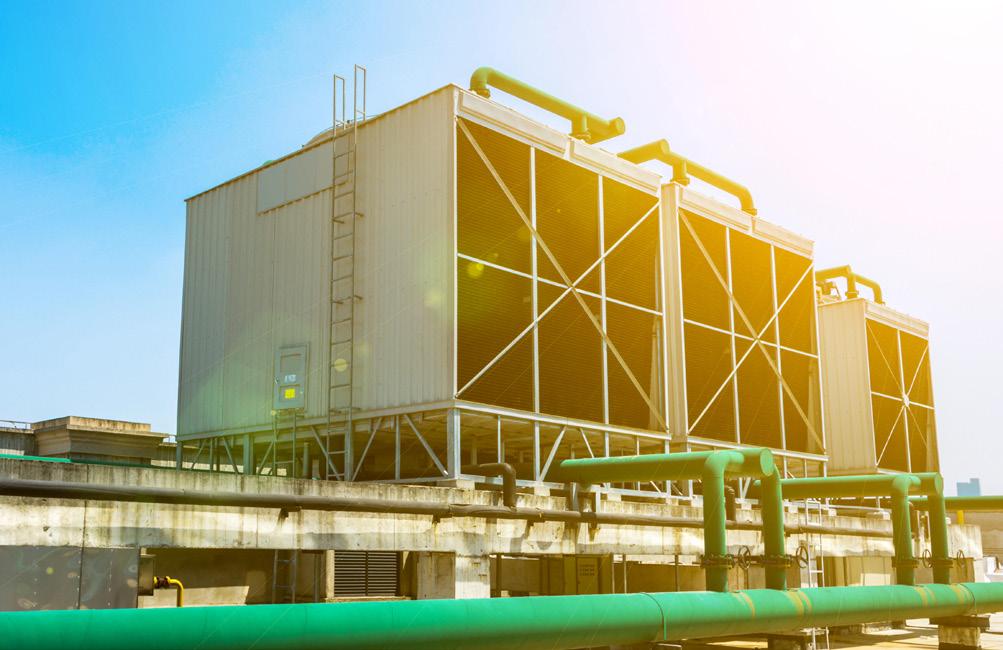
Hybrid solutions incorporating solar with storage improve operational cost efficiency, power reliability and power quality.
Providing cooling services such as chilled water, refrigeration, and air-conditioning combined with plant operation and maintenance for optimized performance.
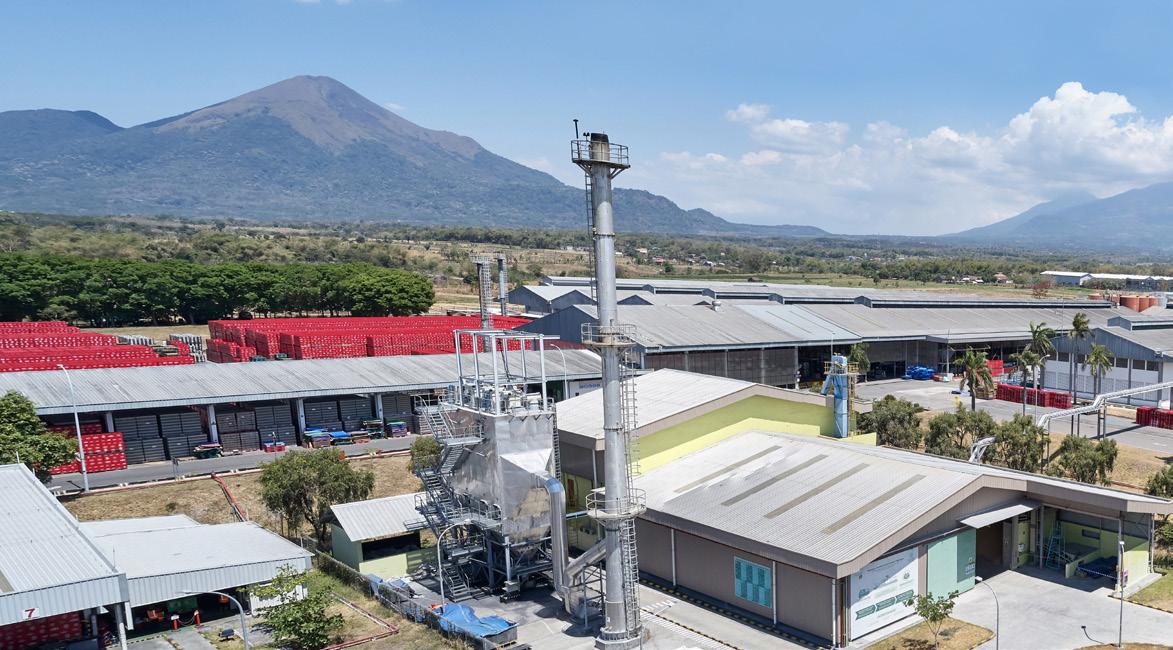

Dedicated energy monitoring and analytics solutions enable businesses to increase cost efficiency as well as the resilience of the energy infrastructure.
BECIS is a leading Energy as a Service (EaaS) provider to high-quality commercial and industrial customers. With the EaaS model, BECIS develops, constructs, operates, and owns distributed energy solutions. This reduces the risk and complexity for our customers whilst achieving their key objectives of sustainability, increased cost efficiency, and resilience of their energy infrastructure, all with no requirement for capital investment.
· Investment
BECIS finances projects to minimize or eliminate customer CAPEX spend.
· Design & Engineering
Our solutions are engineered to high safety and reliability standards.
· Sustainability & Decarbonisation
BECIS continues to expand its solutions offerings which enable our customers to achieveambitious targets.
· Construction
We safely manage and deliver projects – reducing complexity and risk for our customers.

· Asset Performance
Our assets are monitored and maintained over their life to ensure reliable delivery of energy & service.


DISTRICT COOLING PROVIDERS HAVE THE CAPABILITIES TO SUPPORT BROWNFIELD PROJECTS. ALTHOUGH MORE COMPLEX AND DISRUPTIVE, BROWNFIELD PROJECTS HAVE THE POTENTIAL TO BECOME GREENER, AND NOT ALWAYS FROM THE CONVENTIONAL DISTRICT COOLING MODEL.

Having a blank canvas to work with is the perfect scenario, planning every inch of the project with the master developer from pipe networks to energy requirements, and allocation of resources, with little to no disruption to the surrounding community, the perfect scenario for a district cooling provider. Greenfield projects are the optimal choice for cooling providers, to have input from the get-go.
Pipe networks can be planned and laid along with water lines, energy allocation for the cooling plant can be factored and distribution of capacity can be calculated for ideal service provision, in return yielding energy and water saving for the master developers and the customer alike.
By Yasser Al Jaidah Chief Executive Officer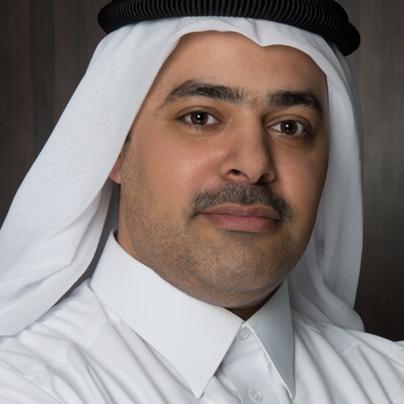

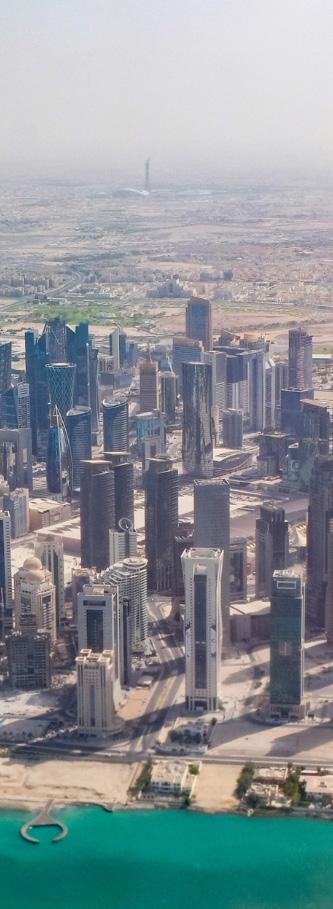
The luxury of planning affords such considerations as, environmentally conscious construction, wastewater management and space optimization. Comfort which will generate ease but more importantly will generate reduced freshwater demand, suitable utilization and allocation of energy and a more sustainable city. Expectations are readily known, costs calculated to the decimal, and infrastructure mapped out, every small but significant detail can be analyzed, considered, optimized, and done with ease.
Greenfield projects are perfect for developing countries or those expanding the boundaries of their cities, but what of those who have nowhere to expand, nor do they have a demand to grow. For those that have reached the apex of their infrastructure growth the opportunity of implementing green technology, such as district cooling, into their municipalities is significantly reduced. Brownfield cities are normally congested with little to no land for cooling plants let alone the desire to disrupt the community with major construction. Most brownfield cities have established cooling from individual central air conditioning
systems, split AC’s, or other similar methods, all of which rely heavily on HFC gases, guzzle energy and have bulky onsite equipment, overtaking prime real estate such as roofs and basements.
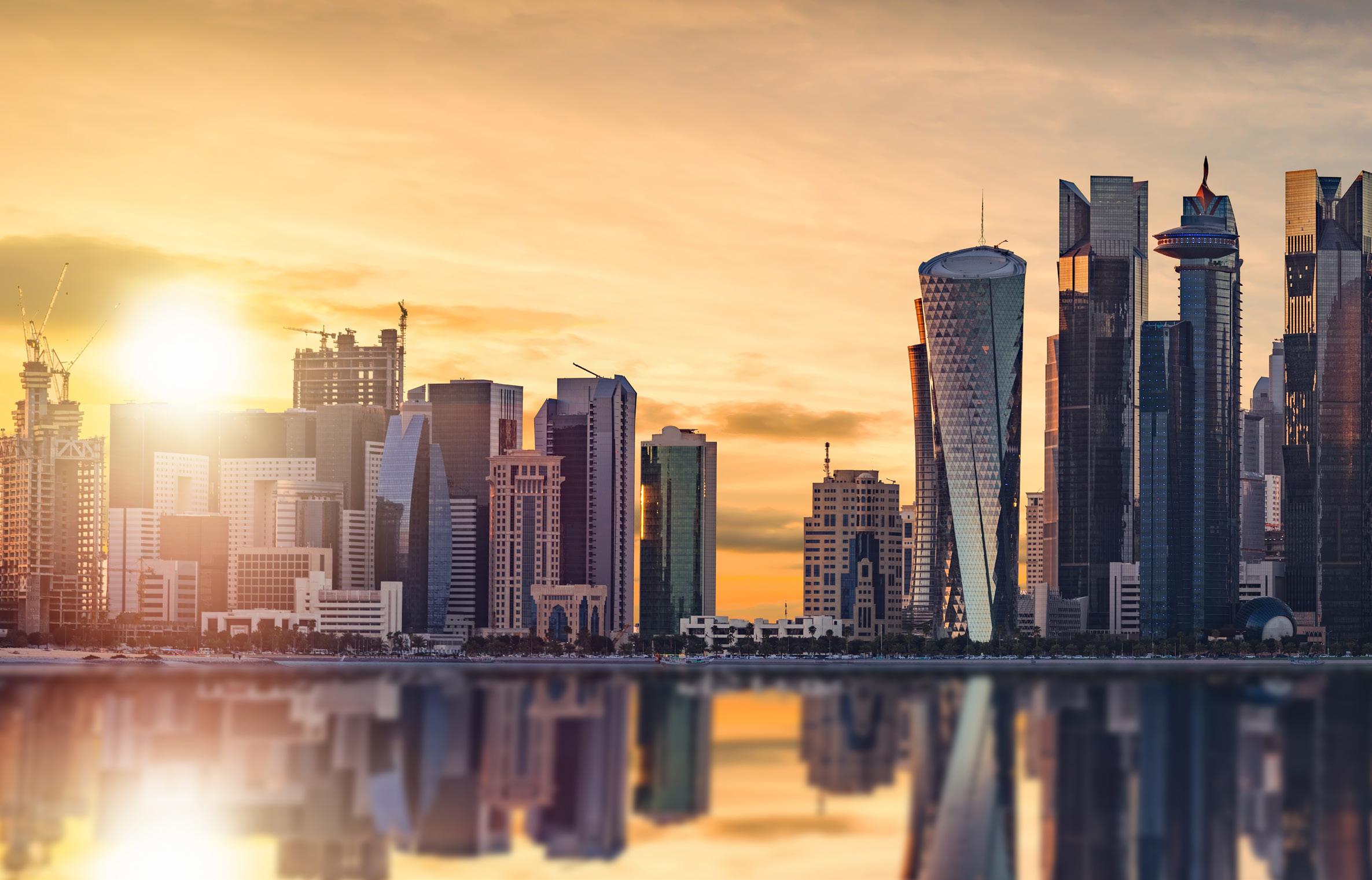
The world is trying to become greener, trying to fix the damage caused by ozone depleting habits, infrastructure, and systems, while preventing further damage. The solution in brownfield projects is not to build a new greener city to replace and achieve one’s green objectives, the brownfields have caused damage this far, simply discounting them is counterproductive, and will not off-set the damage. What we should be looking at is a two-pronged approach. Greenfield projects are the desired choice given that they can be planned and built accurately from the start, but brownfield projects should be looked at in tangent, improving the functionality of brownfield cities infrastructure will generate far better results than a greenfield city alone. Brownfield projects cannot be overlooked, they need to be a part of the plan, they need to be retrofitted and brought as close to the benchmark of sustainability as possible, all be it shadowed by greenfield cities. Although never reaching
the standard of impact, brownfield cities can become comparatively close to that of greenfield cities, if given the correct attention and investment. Simply starting from now and making a conscious effort towards the environment is not enough, the damage exists and will continue if brownfield projects are overlooked. We cannot fix the damage caused, but we can prevent significant damage going forward. Discounting brownfield projects and their impact will always have us chasing our own tail, never actually taking a step forward on our global mission of a sustainable future. Implementing district cooling is not enough, it does not always fit the mold, partnering with a district cooling provider is the wiser route, when looking at brownfield projects.
District cooling providers have the capabilities to support brownfield projects. Although more complex and disruptive, brownfield projects have the potential to become greener, and not always from the conventional district cooling model. Some if not all brownfield projects cannot afford to avail space for cooling plants to be erected, land is precious and almost always occupied. Giving the density and barriers, most
RETROFITTING DOES COME AT A COST, AS DOES TAKING NO ACTION, BUT THE POTENTIAL TO SAVE ENVIRONMENTALLY AND ECONOMICALLY FAR OUT WEIGHTS THE INVESTMENT, YOU NEED TO SPECULATE TO ACCUMULATE, AS THE SAYING GOES.
brownfields avoid discussions on retrofitting and sustainable infrastructure, unaware of the advantages it generates. Retrofitting does come at a cost, as does taking no action, but the potential to save environmentally and economically far out weights the investment, you need to speculate to accumulate, as the saying goes.

Every district cooling provider, given the choice, will opt for a greenfield project, it’s a lot less complex than that of a brownfield project. However, sustainable energy providers like district cooling look at the complete picture. It is not about the complexity alone; it is about the impact the project has on the community and environment alike. To truly make positive impact brownfield projects need to be addressed and worked on in parallel, an optimized country harvests far greater power than an optimized city.
The habit of starting afresh and making better ecological choices from now will not undo the damage caused or the damage which will continue from unattended brownfield projects. Only addressing the root cause will allow for true change and a positive clean future.
Qatar Cool is the leading district cooling company’s in Qatar. Since its inception, Qatar Cool has aimed for operational excellence in every aspect of its business. Over the past 20 years, the company has developed solid technical and operational experience and has refined its approach on both businessto-business (B2B) and business-to-consumer (B2C) fronts. Currently, Qatar Cool is the leading commercial provider of district cooling services in Qatar.
Qatar Cool currently owns and operates five cooling plants covering the West Bay and The Pearl-Qatar districts with the combined capacity of 237,000 tons of refrigeration.


 By Gradyent
By Gradyent

WE OFFER A CLOUD PLATFORM SOLUTION TO CREATE DIGITAL TWINS OF HEATING NETWORKS POWERED BY AI AND ANALYTICS TO OPTIMIZE TEMPERATURE, FLOW AND PRESSURE. WE HELP TO REALIZE THE SYSTEM’S POTENTIAL: MINIMIZING ENERGY USAGE, CO2 EMISSIONS AND OPERATING COSTS WHILE MAINTAINING THE RIGHT LEVELS OF END-USER HEAT SUPPLY.
District heating and cooling is one of the largest opportunities to make heating and cooling of buildings more sustainable. It unlocks the potential of fossil-free heat sources such as geothermal and waste heat, replacing the individual oil or gas boilers that most buildings use today. However, these sustainable heating and cooling networks lose an unnecessary amount of energy and become very complex. Current IT systems are unsuitable for designing and controlling these heating systems.
Gradyent enables district heating and cooling systems to transform into more sustainable systems. We offer a cloud platform solution to create digital twins of heating networks powered by AI and analytics to optimize temperature, flow and pressure. We help to realize the system’s potential: minimizing energy usage, CO2 emissions and operating costs while maintaining the right levels of end-user heat supply.

We work for large heating companies in Europe, such as E.ON, Eneco, Ennatuurlijk, Helen and Wien Energie. Our team consists of 50+ energy specialists, engineers, data scientists, commercial people and top-tier consulting alumni, backed by investors Capricorn, Energiiq, henQ and Helen Ventures. We are an active member of Euroheat & Power and were recently identified by Tech Tour as one of the gamechanging energy innovation scaleups in Europe.
For the Asia market specifically, the following use cases can be addressed:
Real-time optimization of chiller operating schedules used in cooling systems – saving up to 5% of fuel/ electricity costs

Forward- and return temperature optimization of heating and cooling systems – especially important when operating heat pumps (see below)
Design simulations of expansions or changes to heating and cooling systems to reduce capex (up to 20% savings realized)
NXITY is a unique consulting firm in the region, working with progressive government agencies, leading District Energy developers, and the largest and most complex District Energy projects across Asia Pacific. The multidisciplinary business consulting firm has a track record of several dozen successful District Energy developments and implementations across the region. With almost a decade of operation in the region and offices in China, Thailand, and India, NXITY is truly a localized international District Energy consulting firm. Since last year, NXITY has also increased their activities in Northern Europe, and to hear more on what NXITY is doing there we sat down with Lars Ärlsjö, Managing Director of NXITY Sweden.
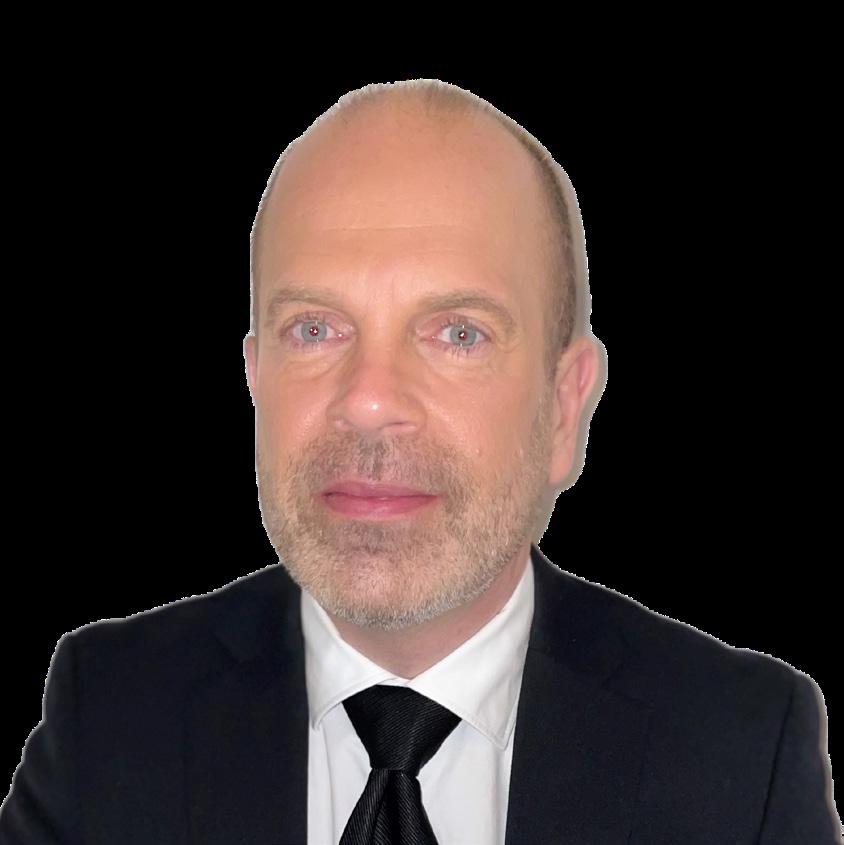
IN NXITY, WE HAVE COMPREHENSIVE SYSTEM AND GOVERNANCE KNOW-HOW AND UNDERSTANDING OF WHAT IT TAKES TO SUCCESSFULLY DEVELOP, OPTIMIZE AND MANAGE INTEGRATED URBAN ENERGY SYSTEMS. WE DEVELOP PROJECTS AND BUSINESSES WHILE EMPOWERING PROJECT AND LINE ORGANIZATIONS.
I’m an energy and environment fellow from Uddevalla on the Swedish west coast, with 30 years of working experience and a passion for sustainability. I’m fifty-five years old and have worked in the energy and environment sector my entire career. Since the beginning of my career, I have held different engineering positions and have developed into various management positions over the years. This has provided me with a combination of specialist know-how and broad management experience.
In the period 1997-2021, I worked as head of operations, project manager for a newly established waste incineration CHP, and head of the district energy business unit at Uddevalla Energy. In 2014-2018, I had a break from Uddevalla Energy and undertook the position of CEO of the waste management company Rambo. Today, I’m a Partner and Managing Director of NXITY Sweden.
At the beginning of my career, in the early 90s, I worked as an analyst carrying out seamless thermal and hydraulic steady-state and transient-state analysis of district heating and district cooling schemes with the outstanding PFC software (now provided by NXITY). When I came in contact with NXITY in 2021, I was amazed by the work they are doing worldwide, analyzing and optimizing District Energy systems, Co- and Tri-generation schemes, and Industrial Utilities, with great positive impact on the environment. When I got the offer to join NXITY as Partner and Managing Director of NXITY Sweden, I saw an opportunity to utilize all my experience gained over the years while, in a way closing the circle of my career, coming back to the system analysis and project management expertise.
In 2022, NXITY took a decision to grow in the Swedish market, which I was appointed to lead. We have defined our focus for the initial years in terms of business areas and services. We have also established a strategy on how to grow the local organization while collaborating with the other NXITY entities in Southeast Asia, India, and China. We have been rather successful in promoting our unique competencies and services and were early on engaged by some of the leading utilities and technology companies in Sweden.
NXITY Sweden’s initial business area focus is on District Energy, Thermal Power, Energy Planning, and Industrial utilities. We provide project management, multidisciplinary business consulting, and management-for-hire services. In addition, we provide some digital tools for design and O&M optimization.
Our project management services allow us to not only provide engineering services but also help our clients execute projects from pre-design, design, procurement, construction and installation, commissioning, and even O&M optimization. Internationally, NXITY has long experience acting as Owner’s Engineer and Lender’s Engineer.
Our multidisciplinary business consulting services combine energy, environment, and ICT engineering with management consulting skills. This combination is of great importance for the energy schemes of the future.
NXITY provides PFC for seamless thermal and hydraulic steady-state, quasistatic, and transient-state simulations of district cooling and district heating systems. In addition, NXITY provides O&M optimization tools for load forecasting, production planning, temperature optimization, and corrective-, preventive, and predictive maintenance.
In NXITY, we have comprehensive system and governance know-how and understanding of what it takes to successfully develop, optimize and manage integrated urban energy systems. We develop projects and businesses while empowering project and line organizations.
The services often focus on optimizing financial performance, maximizing technical performance, and improving the environmental performance of projects and assets.
One of our core competencies and strengths is to carry out seamless production and distribution analyses (“PaD analysis”), or in other words, complete comprehensive system analysis, for O&M optimization and investment analysis. We have the ability to interact and take advantage of our client’s existing tools while applying our methodology and specialized tools for the PaD analysis.
NXITY often acts as a client representative and specialist for government agencies, utilities, investors, and solution providers. NXITY’s clients comprise leading utilities and technology enterprises in Sweden.
In Stockholm, we conduct PaD analysis and provide daily advisory for operation optimization and investment analysis for Stockholm Exergi. We are also engaged in development strategy work covering both district cooling and district heating.
In Trollhättan, we are hired as interim line managers for the district heating and power business unit of Trollhättan Energi, undertaking the daily management.
In Lysekil, we are engaged as client representatives for the local district heating company for an extensive heat recovery project involving one of the most advanced refineries in Europe, namely Preemraff.
We are also engaged with the Swedish Defense and Research Agency as
well as the aerospace and defense company SAAB. Besides having high requirements on the quality level of services, these organizations obviously have extraordinary security requirements, which NXITY and its employees live up to.
NXITY has carried out dozens of outstanding projects in the international arena for the world’s leading investors and utilities in the urban energy sector. The competencies and experiences NXITY have gained internationally are often of such scale and complexity that we are unique among other consulting firms in Sweden.
Experience exchange between the NXITY entities is of great benefit, and we have the opportunity for our staff to work on international projects if they desire. By working internationally, we are always updated on new technologies and supporting tools, which allows us to advise not only our clients from a Swedish context but internationally as well.
I’m also convinced that other NXITY entities will benefit from Swedish engineering as well, so we will definitely support the international activities of NXITY Sweden as well.
NXITY has carried out dozens of outstanding projects in the international arena for the world’s leading investors and utilities in the urban energy sector.
The competencies and experiences NXITY have gained internationally are often of such scale and complexity that we are unique among other consulting firms in Sweden.

In only six months, we have grown to be a handful of senior specialists in Sweden. We already see that there is a surge in our know-how and services, and we will definitely grow further within our initial focus areas. I also believe we will expand within project implementation management and support. In addition, we have also identified a few sectors with synergies and interfaces to what we do today, so I believe we will broaden our scope within the coming years.
I’m very positive about NXITY’s future. Our core competencies are crucial for developing, implementing and optimizing integrated urban systems, including energy systems, municipal utilities, and the integration of various technologies. Our “NXITY Smart”-concept, which often is communicated internationally, is a multidimensional approach keeping both the entire system value chain and the entire project process in mind while working towards systemic efficiency, flexibility, intelligence, integration, competitiveness, reliability and safety. This is crucial for sustainable and resilient urban systems of tomorrow, where we cope with volatility and dynamics in different aspects.

We are looking for a mix of seniority, but analytical abilities are important. Experience in thermodynamics and energy system simulations is definitely an advantage, but project management experience within our focus areas and energy planning experiences could fit as well.
Anyone who is interested in working with us is welcome to contact me for job openings in Sweden, and I will help candidates who are interested in working in our offices in Bangkok, Beijing, or Delhi to get in contact with the right persons in NXITY.
NXITY, with offices in Thailand, China, India and Sweden, provides project development, implementation and optimization services for District Energy, Thermal Power and Sustainable City developments. NXITY is engaged by cities, utilities, investors and solution providers across the region, empowering client and project organizations by adding value, filling management and engineering gaps, and providing quality assurance along the entire project value chain. Contact: John Jakobsson, Managing Director, NXITY Energy ICT Solutions john.jakobsson@nxity.com www.nxity.com


On 22 March, APUEA hosted the workshop Supporting the Energy Transition in ASEAN with Sustainable Urban Energy during the PhilEnergy Expo in Manila with Informa Markets.



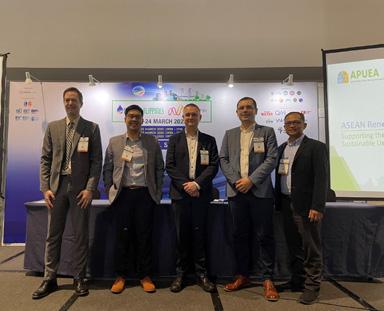

Cities occupy only two percent of the world’s landmass but consume over two-thirds of the world’s energy and account for more than 70% of global CO2 emissions. 9 out of 10 ASEAN countries have set net-zero targets, and the Philippine government has committed to reducing greenhouse gas emissions by 75 percent in 2030. To reach these targets, policymakers in ASEAN are currently updating energy policies in the region to stimulate the Renewable Energy and Energy efficiency sector. It is also clear that cities play a vital role in the energy transition and reaching climate targets.
This seminar included presentations and discussions on technology and solutions available today and can be deployed to help businesses and ASEAN cities fulfil their renewable energy and energy efficiency targets.

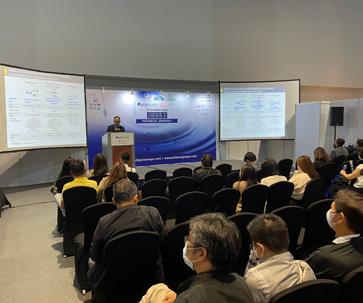
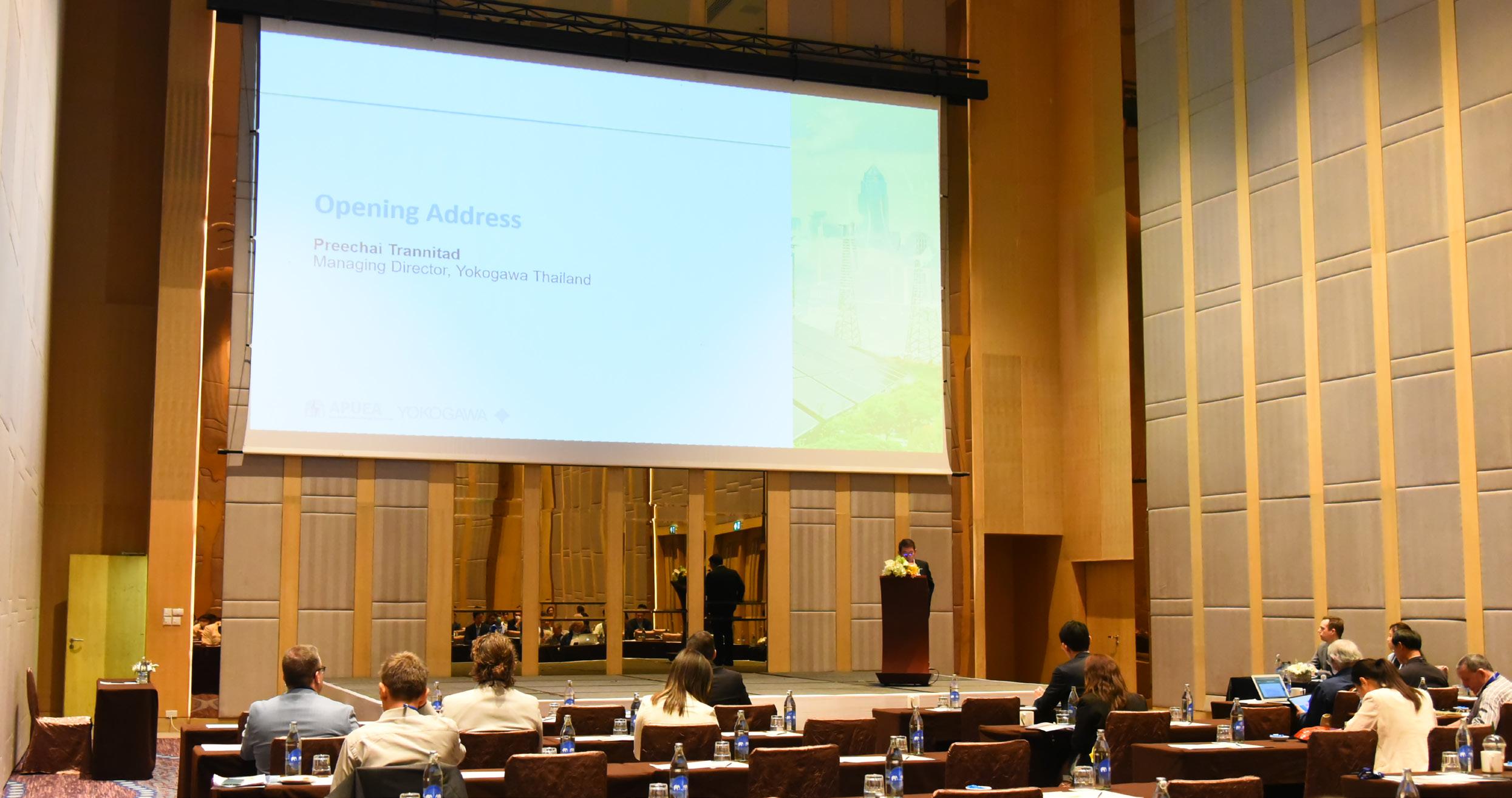
Session topics:
- Renewable Energy Integration
- District Cooling
- Energy Efficiency
- Energy Management Systems
- Distributed Energy Resources
- Distributed Energy Resources Management Systems
Speakers:
- Emmanuel Arcilla, Black & Veatch
- Buddy Bocarile, Yokogawa
- Glynn Addicott, Hydraulic Analysis
- Jean-Baptiste Dreanic, ENGIE
- Peter Lundberg, APUEA (Moderator)
On 17 March, APUEA hosted the ASEAN Renewable Energy Seminar – Thailand together with Yokogawa at the AVANI+ Riverside Hotel Bangkok.



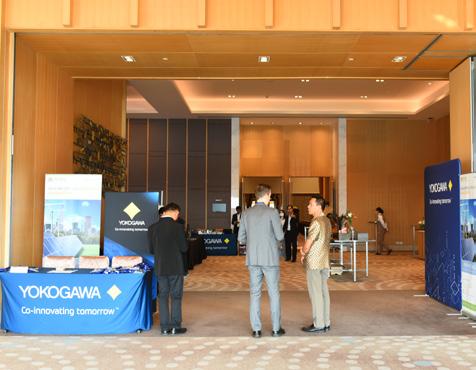
9 out of 10 ASEAN countries have set clear climate targets. Prime Minister Prayut Chan-o-cha has declared that Thailand will aim to reach carbon neutrality by 2050 and net-zero greenhouse gas emissions by 2065 (if not before). To fulfil these pledges, Thailand is updating its National Energy Master plan, with expected increased targets for renewable energy and energy efficiency. Many technical solutions are available today to help businesses improve their productivity and contributions towards building a greener environment using renewable energy and enhanced integrated energy efficiency solutions.
The seminar included presentations and discussions on Thailand’s latest energy policies, climate targets, and how the energy market will transit and change in the next few decades. The seminar also included an introduction to technology and solutions that can help Thailand and businesses in the renewable field to fulfil their energy efficiency and sustainable development goals.
From 28 February to 04 March 2023, APUEA was a conference partner of the 9th edition of India Smart Utility Week (ISUW) (ISUW23), an International Conference and Exhibition on Smart Energy and Smart Mobility, in New Delhi, India.
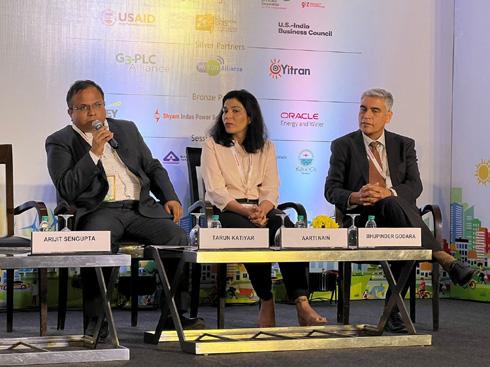

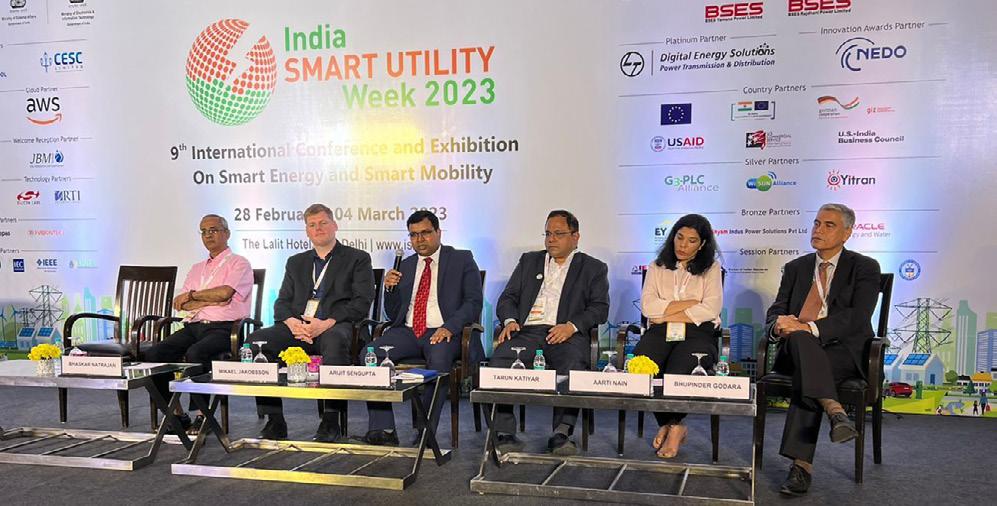
On 02 March, APUEA co-hosted a workshop titled District Cooling Systems (DCS), together with the Bureau of Energy and Efficiency (BEE), GIZ, and the Alliance for an Energy-Efficient Economy (AEEE).

Soon the maximum summer temperature will exceed 50°C in Northern India, making it extremely difficult for people without access to cooling. There is an urgent need for an innovative solution to help avoid the summer heat. District Cooling System (DCS) is an alternative route to effectively address the space cooling challenge. District energy systems are being successfully implemented in many parts of the world and have evolved as a mature technology. In the Indian context, district cooling systems (DCS) present an opportunity to address the space cooling challenge effectively; and provide cooling as a service against a monthly fee, much like electricity, water and gas.
To stimulate the development of District Cooling Systems in India, the Bureau of Energy Efficiency (BEE) in India has constituted a Technical Committee comprising stakeholders from different domains in 2021. This Technical Committee has developed District Cooling Guidelines to serve as an information handbook for different categories of stakeholders involved in DCS projects. The electricity load on the grid from a DCS would be 35-40% less than each building having its own air-conditioning systems. Thermal Energy Storage systems can offer additional peak load reduction to the electric grid; and load management during hours of surplus generation on the grid. There is an accelerated focus on District Energy Systems across the globe to enable energy transition as it serves as an integrated energy system for cities and communities.
Session Discussion Points
- Regional Outlook on DCS in the Asia Pacific Region
- APAC National Climate Targets and Cooling Plans / District Cooling as a Solution to Increase Energy Efficiency and Reduce GHG-impact from HFCs
- Learnings from other countries / District Energy from a European Perspective
- Draft District Cooling Guidelines by BEE, India
- Challenges and Way Forward for DCS Rollout in India
- Adoption of Cooling as a Service in India
- Policy Interventions Needed and Business Models for DCS in India
- DCS as a Thermal Storage for Enhancing the Flexibility of the Electric Grid
- Waste to Cooling
Session Topics:
- ASEAN Renewable Energy Outlook
- Overview of the Latest Energy Policies in Thailand

- Energy Management Systems, Energy Storage Systems, Microgrids, and more.
Speakers:
- Dr Poonpat Leesombatpiboon, Executive Director of International Affairs Division, Ministry of Energy, Thailand

- Preechai Trannitad, Managing Director Yokogawa Thailand
- Dr Boonrod Sajjakulnukit, Renewable Energy Expert, Joint Graduate School of Energy and the Environment (JGSEE)
- Joe Sullivan, Head of Sales, PXiSE Energy Solutions
- Vachan Alva, Head of Sales, Renewable & Power, Yokogawa Engineering Asia
- Lee Ucich, Engineering Consultant, Energy Transition Engineering Services (ETES)
- Peter Lundberg, APUEA (Moderator)


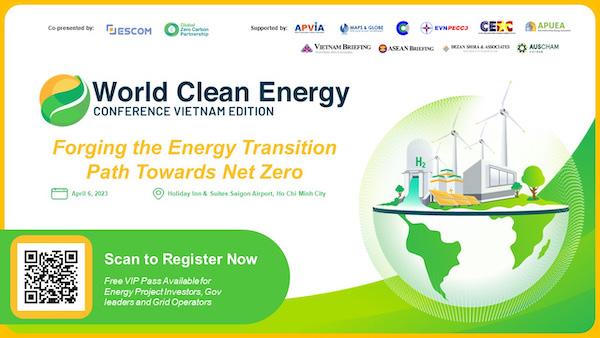
On 06 April, APUEA was a supporting partner during the World Clean Energy Conference Vietnam Edition, held ‘, at Holiday Inn & Suites Saigon Airport, Ho Chi Minh City, Vietnam. Themed “Forging the Energy Transition Path Towards Net Zero”, this congress brought together the public and private sectors across the energy sector in Vietnam to meet, learn and discuss how to establish a net zero strategy for the decade to come.
Co-presented by: Escom Events, Global Zero Carbon Partnership
Supported by: Asia Pacific Urban Energy Association (APUEA), Asian Photovoltaic Industry Association, EVNPECC3, Vietnam Briefing, ASEAN Briefing, Environmental and Climate Change Research Institute (ECCRI), AusCham Vietnam, Central and Eastern European Chamber of Commerce in Vietnam (CEEC), Dezan Shira & Associates

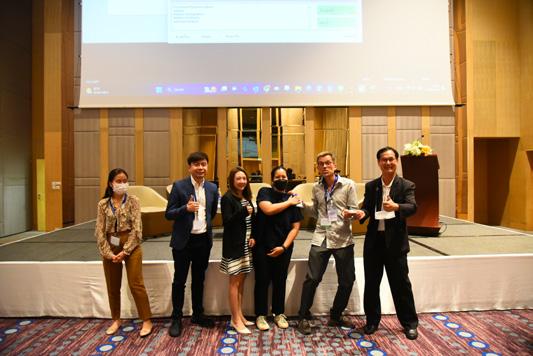


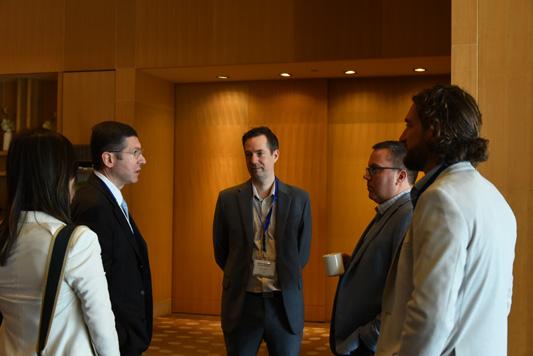
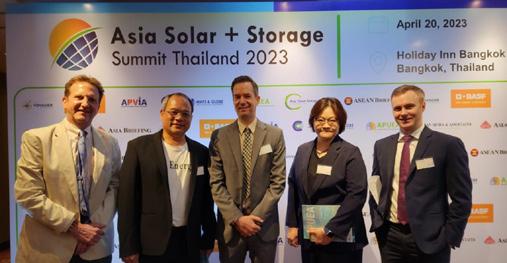

On 20 April, APUEA was a supporting partner during the Asia Solar + Storage Summit at the Holiday Inn Silom branch in Bangkok, Thailand. Southeast Asia, led by Thailand, is the new landscape for utility & rooftop solar, with opportunities within GW-plus annual market. This event brought together industry leaders, policymakers, utilities, solar storage developers, responsible investors, financiers, and asset solution providers from across Asia to discuss how to support the energy transition in Thailand.
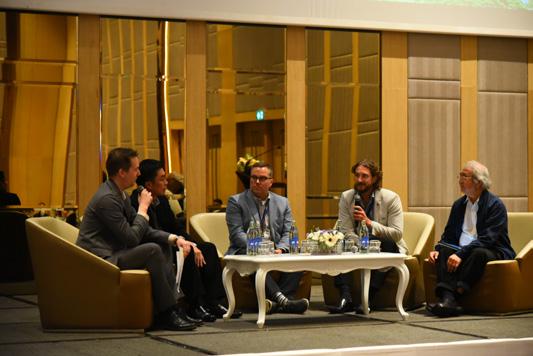

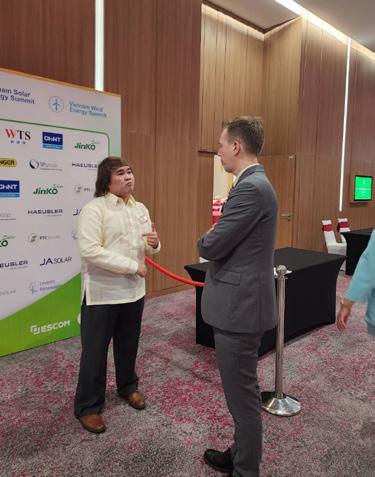

Co-presented by: Escom Events, Global Zero Carbon Partnership
Supported by: Asia Pacific Urban Energy Association (APUEA), Asian Photovoltaic Industry Association, Asia Clean Energy Partners, ASEAN Briefing, Environmental and Climate Change Research Institute (ECCRI), Maps & Globe Specialist and Dezan Shira & Associates



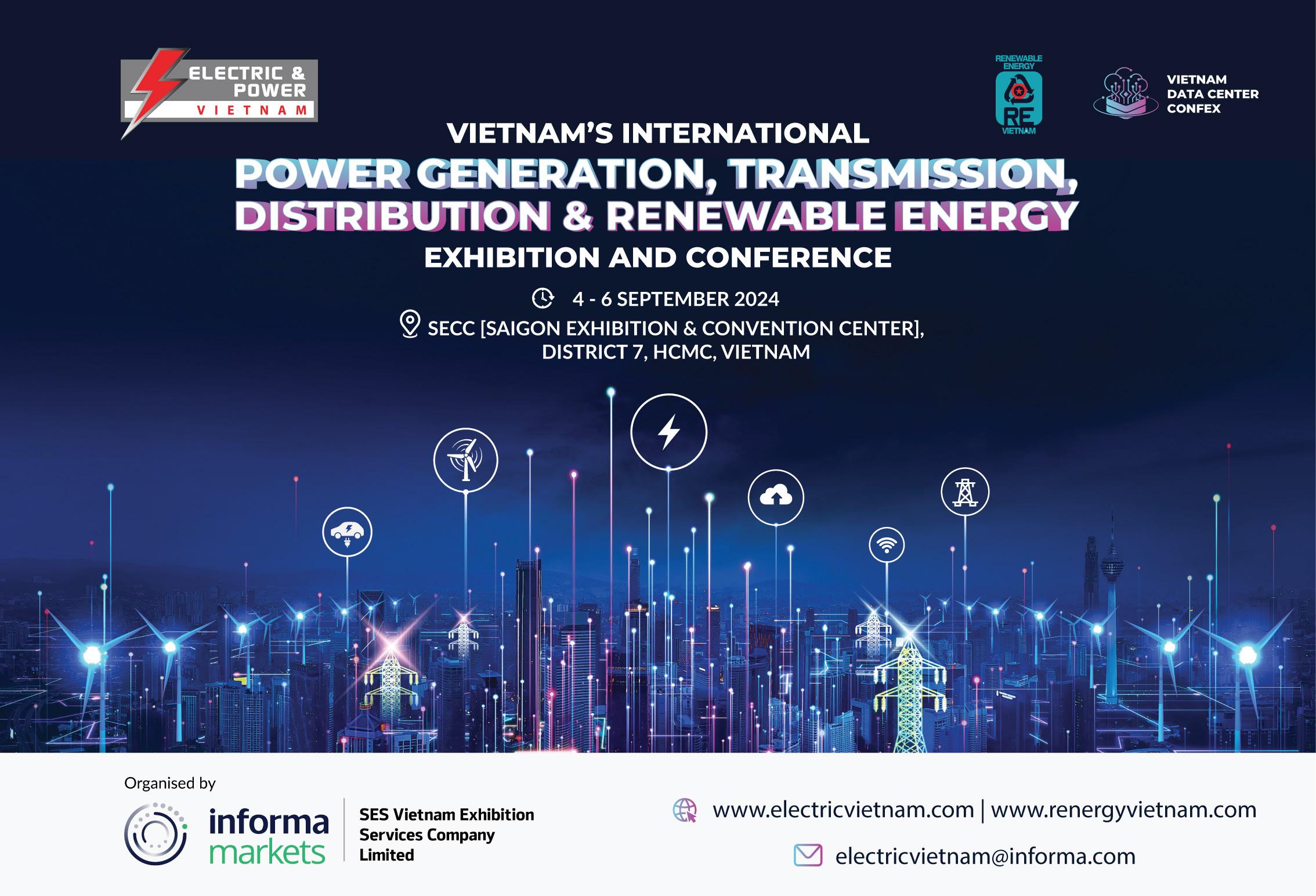

ASIA URBAN ENERGY ASSEMBLY

30 August01 September
Bangkok, Thailand
20
APRIL
22-24
MAY
ASIA SOLAR+STORAGE SUMMIT THAILAND 2023
Bangkok, Thailand
20 APRIL 2023
EUROHEAT & POWER CONGRESS
Torino, Italy
22-24 MAY 2023
13-16
JUNE
ASIA CLEAN ENERGY FORUM
Manila, The Philippines
13-16 JUNE 2023
25-27
JULY
HVACR VIETNAM
Hanoi, Vietnam
25-27
JULY 2023
30-01
AUGUSTSEPTEMBER
13-16
SEPTEMBER
ASEAN SUSTAINABLE ENERGY WEEK
Bangkok, Thailand
30-01 SEPTEMBER 2023
ELECTRIC & POWER INDONESIA
Jakarta, Indonesia
13-16 SEPTEMBER 2023
31 OCTOBER
06-07
DECEMBER
DISTRICT COOLING INTERNATIONAL CONFERENCE GOA, India
31 October - 1 November 2023
SHANDONG URBAN ENERGY SUMMIT
Jinan, China
06-07 DECEMBER 2023






• Asian Development Bank (ADB)

• International Energy Agency (IEA)






• United Nations Environment
• Asian Infrastructure Investment Bank (AIIB)

• REN21
• C40 Cities
You can print out your registration and entry form below.
ORGANISATION / COMPANY DETAILS: 1
Organization name
Marketing name and/orAbbreviation
Street
Postal code City Country
General Phone General Fax
General E-mail Web
Primary Contact: First name Surname Position Direct Phone
ORGANISATION CATEGORY (please check as appropriate below): 2
Association / Federation NGO
Academic Advisor - Financial / Legal / Banking Consultancy - Engineering / Design /Technical
Specify:
BILLING INFORMATION (if different from above): 3
BillingAddress:
Manufacturer / Equipment Supply
Utility / Operator
Media company - Press / Journalist /Advertisement
Building Sector
Other
MEMBERSHIP CATEGORY (please check as appropriate below): 4
PAYMENT METHOD: 5
BankTransfer Credit Card Paypal
Please indicate preferred payment method. Payment instructions will be provided following confirmation of membership.
Please complete the form, and send a scanned version to info@apuea.org
